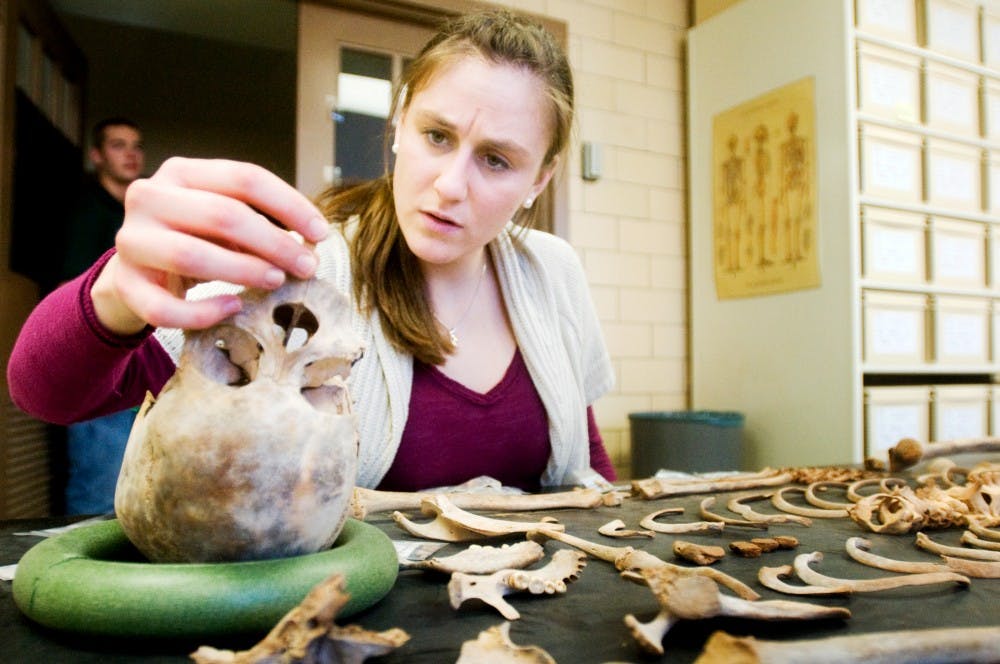“From the banks of the Nile to the banks of the Red Cedar.”
That’s how Todd Fenton, an associate professor of anthropology at MSU, describes his current project, in which he and students working in his Giltner Hall lab are observing medieval Nubian skeletons, which four MSU graduate students helped excavate from Africa, on loan from the British Museum.
Nubia was a kingdom just south of Egypt, and in medieval times, it was very influential in trade from the Mediterranean to sub-Saharan Africa because it controlled a large portion of the Nile, said Carolyn Hurst, a graduate student who manages Fenton’s lab. However, she said that’s about the extent of modern knowledge about Nubia.
“We don’t know a whole lot about (Nubia),” Hurst said. “Their language hasn’t been cracked, so we’re basically laying the foundation of Nubian history.”
Fenton said the team is trying to understand how Nubians lived their lives, including examining bones for health and disease.
Anthropology and history senior Paige Wojcik, a team member, said the group mostly has been working on collecting data to contribute to the British Museum’s database, such as the age of each skeleton and whether it is a complete skeleton.
Recent work is centered on actually analyzing the bones. First, the adults were examined for age, sex and any general clues about the health of the individual, Fenton said. The lab since has turned to examining the juvenile skeletons similarly, Fenton said.
Unfortunately, Hurst said the team can’t be as thorough as they would like because they can’t do anything that might damage the bones, such as taking samples for DNA or isotope testing. But she added there’s still a lot to be learned even without that type of testing.
The skeletons are currently on a five-year loan to MSU, but the loan is renewable.
“We want to renew,” Fenton said. “There’s a lot of work to be done. We’re just now starting to scratch the surface.”
Wojcik said she has enjoyed learning about the individuals based on their skeletons.
“Being able to see what happened in their lives is really cool,” she said. “Seeing an illness marker in the bone and trying to guess what happened there.”
Fenton said undergraduate participation has been an important part of the project, with more than five working in the lab on Monday afternoon.
“What we really like is that we’re able to involve so many undergrads,” he said. “It really sets (MSU’s) undergraduate program apart.”
Wojcik, who currently is applying to graduate schools, said her experience in Fenton’s lab is a big deal to her.
“It’s an opportunity to practice what we could potentially do in our careers,” she said. “This is something I can see myself doing in the future.”
Support student media!
Please consider donating to The State News and help fund the future of journalism.
Discussion
Share and discuss “Nubian skeletons reveal secrets of ancient times” on social media.





